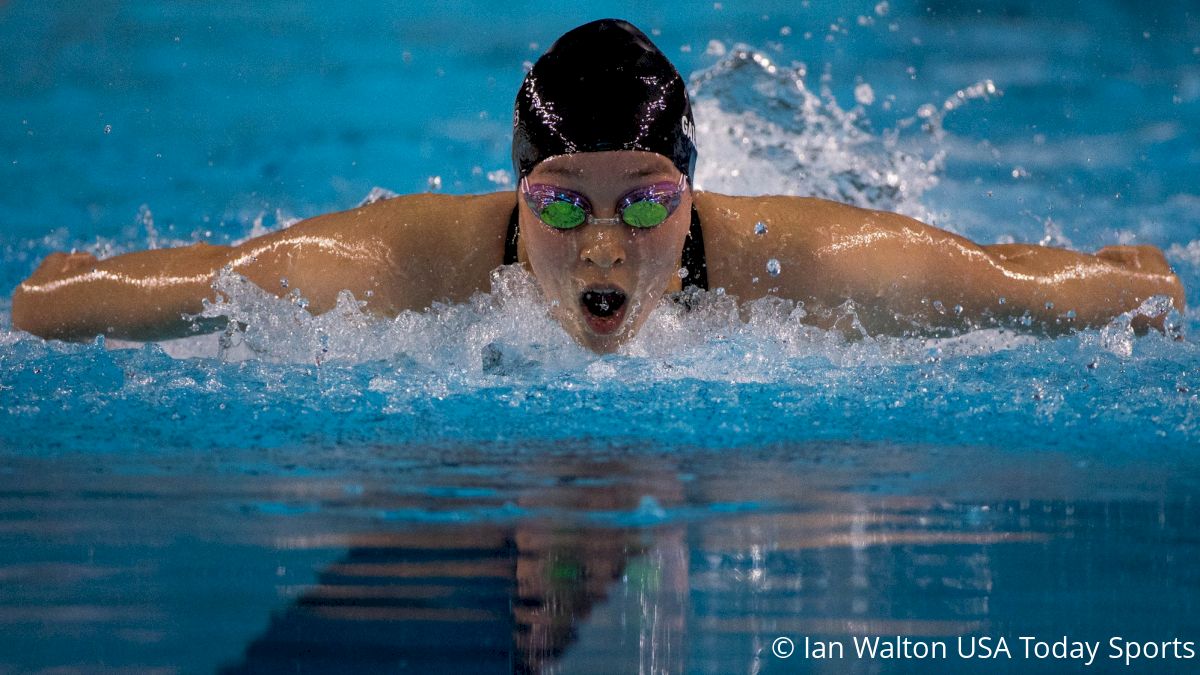Swimmers Are Nerds
Swimmers Are Nerds
Swimmers are some of the nerdiest athletes in the world of sports. From the sets we do, the counting, the times, etc.

If you haven’t realized it by now, swimmers are some of the nerdiest athletes in the world of sports. From the sets we do, the counting, the times we go, etc., etc., there’s a lot that goes into becoming a high-level swimmer, and a good portion of it comes down to being just plain nerdy. We’re going to break down the nerdiness of our sport into three categories, counting, data and more data.
Counting
It might not seem like being able to count the way that swimmers do is all that big of a deal, but when you think of it from an outsider’s perspective it starts to make more sense. Let’s start with a basic set written out in plain English—which is really a foreign language.
“Three rounds of 10 50s, descend one to three and hold, up to 85 percent. Round one, best stroke on one minute. Round two, stroke choice on one minute. Round three, freestyle on 45 seconds.”
Now, you won’t get the full understanding of how our brains are wired unless you write out a set on your own. So at this point in the article, you should pause and give it a shot.
Now that you’ve done that, compare the reading from the written portion to the formatted portion. In this formatted section you’ll notice that during a high intensity set an athlete will be counting from 1-10 three times, counting by 50, remembering the times they’ve gone on each 50, leaving on specific intervals, and thinking about percentages all at the same time. This ain’t easy, chief.
3 Rounds:
10 50s (descend 1-3 then hold up to 85%)
- Round 1: Stroke on 1:00
- Round 2: Stroke choice on 1:00
- Round 3: Freestyle on 0:45
Data
From the raw data side of the sport it took me a good year-plus after finishing my competitive career to realize how data obsessed I really was.
The realization set in when I was forced to use an analog clock as opposed to a digital clock when getting back into the sport. The lag time in touching the wall, looking at the analog clock, finding the correct hand, then guessing the range of 2-3 seconds that I touched that wall in just wasn’t cutting it. The immediate data reception that comes with digital pace clocks is a necessity for athletes trying to perform at a high level.
This (and a previous article I wrote) got my brain thinking back to all of the sets, performance, and specific times I remembered even YEARS after completing the workouts.
Take a second to think back to a few of your favorite workouts and let the sheer nerdiness sink in as you realize how many specifics you still have held captive in your brain.
More Data
The last point I’ll make is a recent discovery that came to my attention looking at live results from conference championships across the country this season.
First of all, take a long, hard look at a live results page for an 800 freestyle relay and give yourself a pat on the back if you aren’t immediately overwhelmed by the sheer amount of numbers on that page.
The fact that live results pages are pretty much a language of their own could be enough to get this point across, but when I opened up a results page this past weekend just to notice that there were NO SPLITS on the page it really sank in.
Opening a live results page and noticing there aren’t split breakdowns is nearly enough to send a swim nerd into a breakdown of their own. Reading the splits of a relay for a swimmer is comparable to reading a good book or watching a movie. You can notice patterns, see what led to a relay getting overtaken, and paint the picture of the race in your head without even really watching it.
After all of this if you’re not convinced you’re a nerd, you might just be in denial. Go knock out a quick six rounds of three 100 IMs on two minutes with a one minute break in between each round. Keep all of those times in your head, remember them for two years and then when you do that set again try and compete with yourself from two years ago to see if you’re getting better or not.